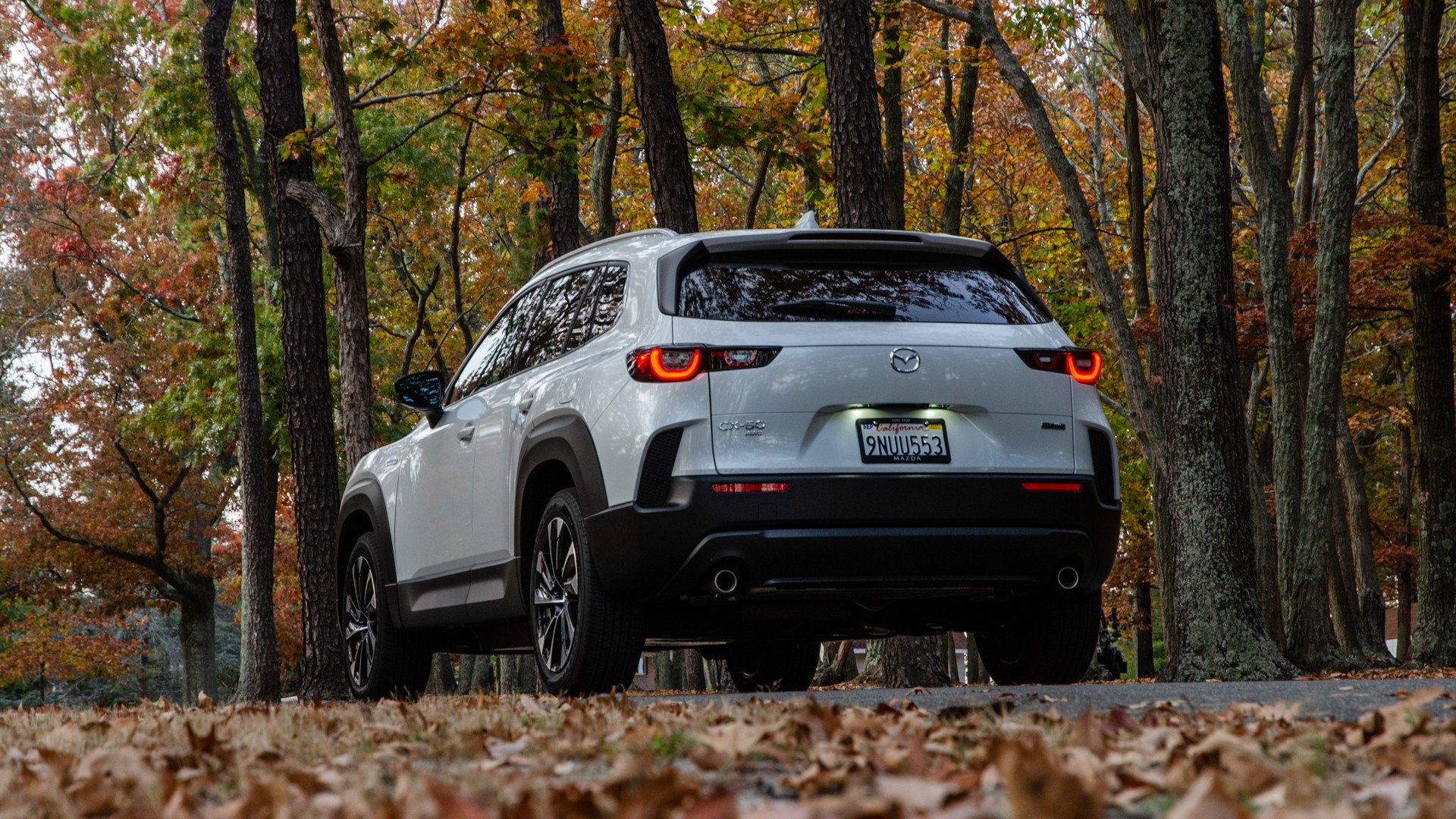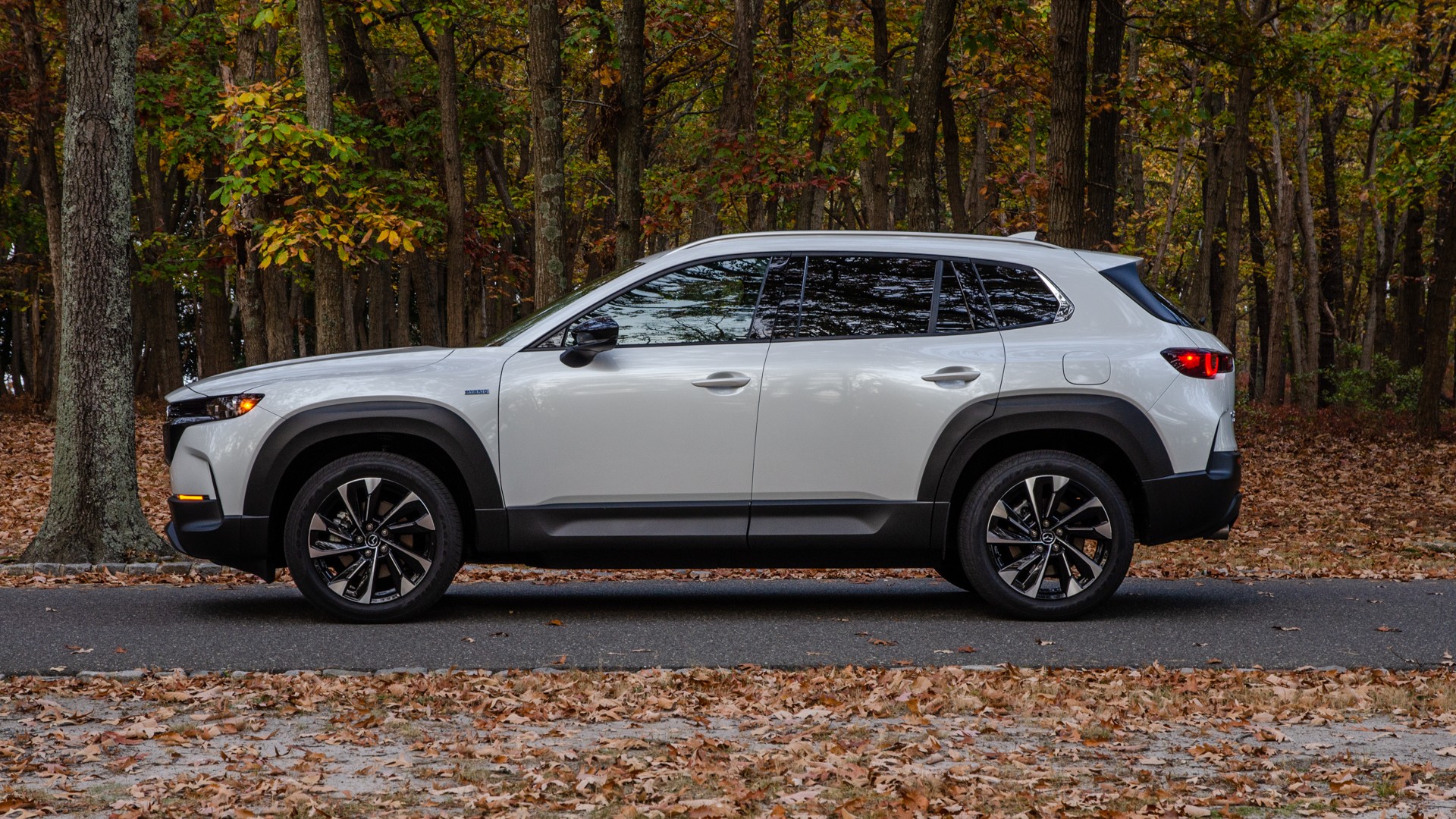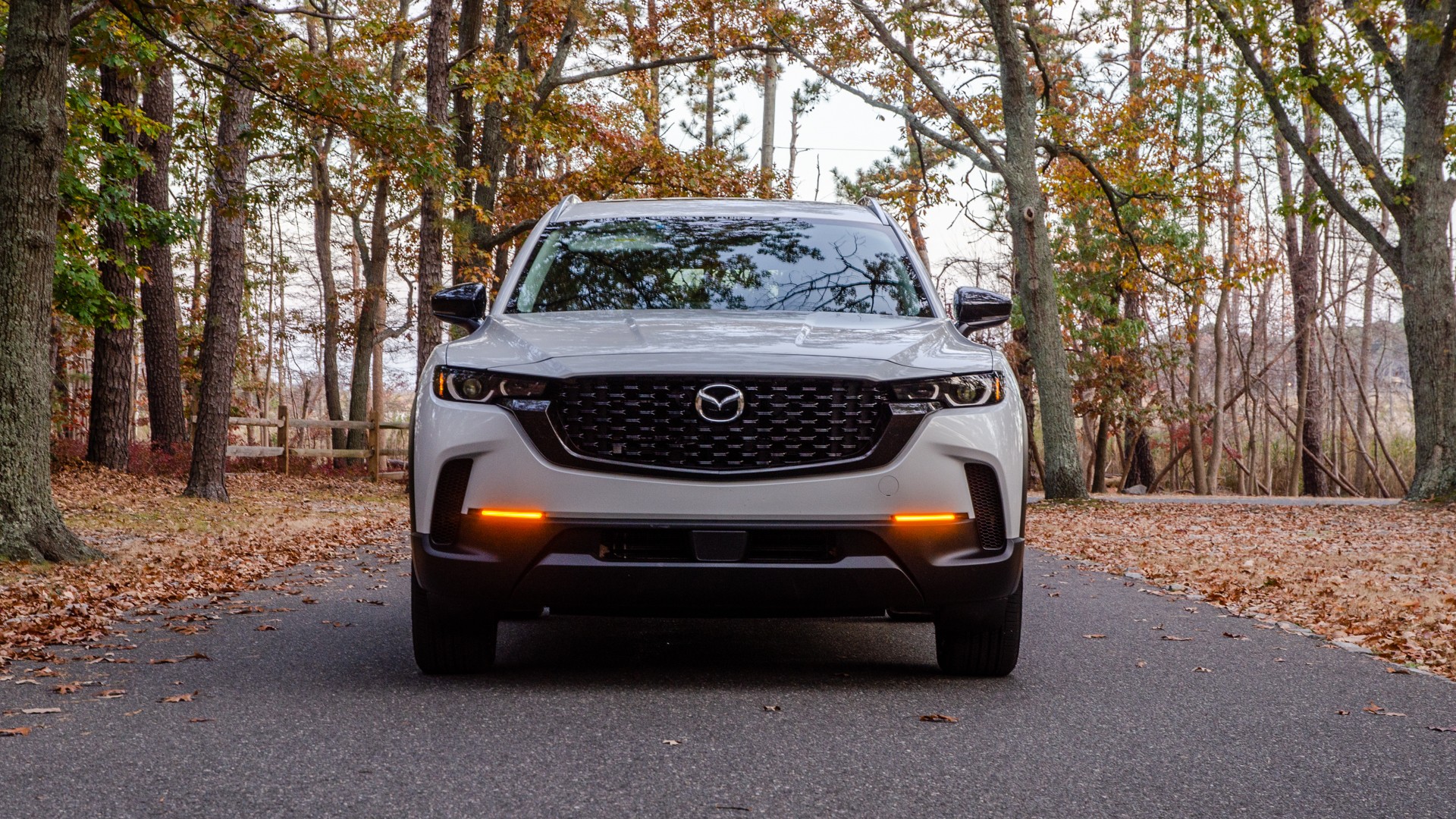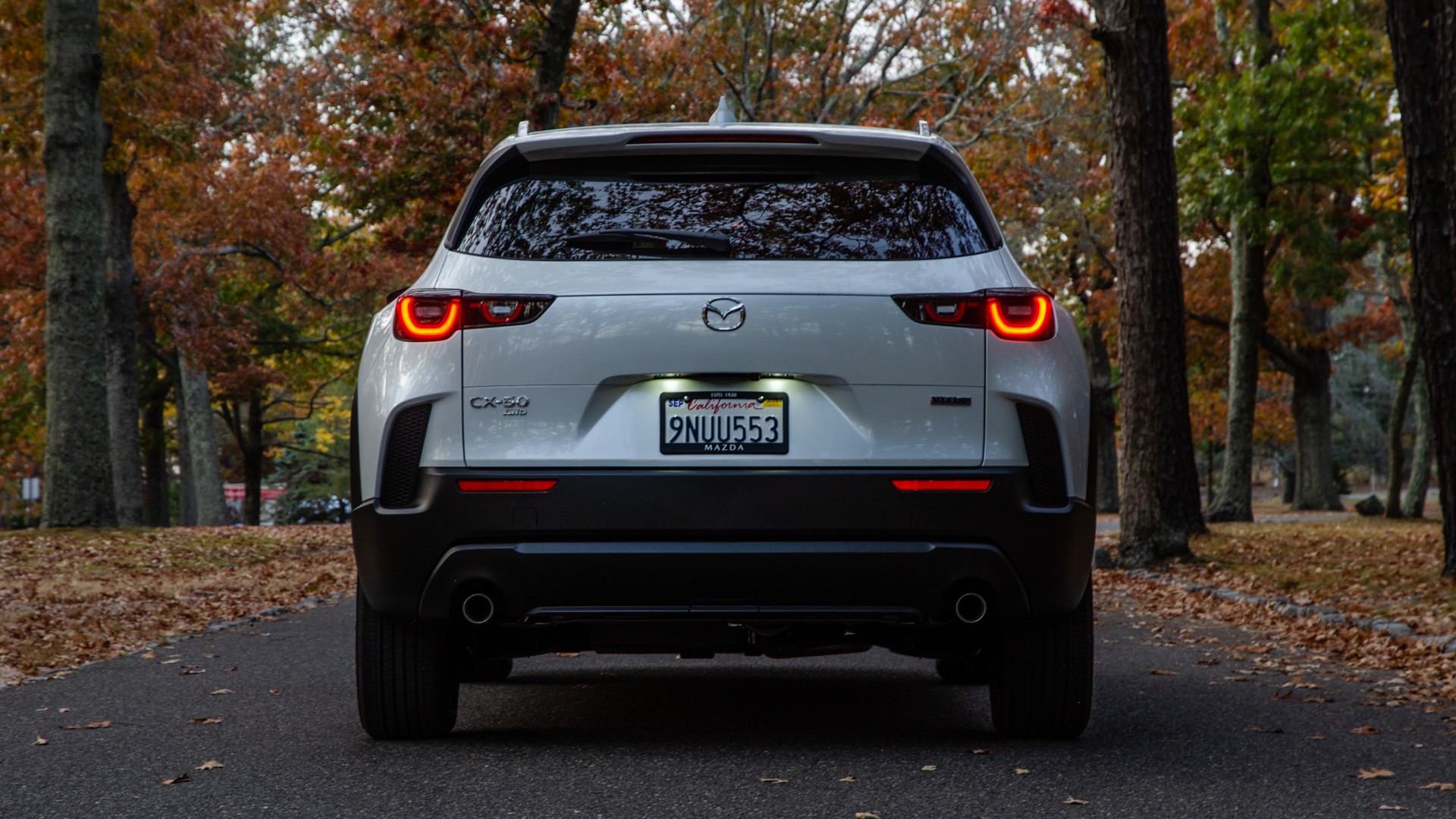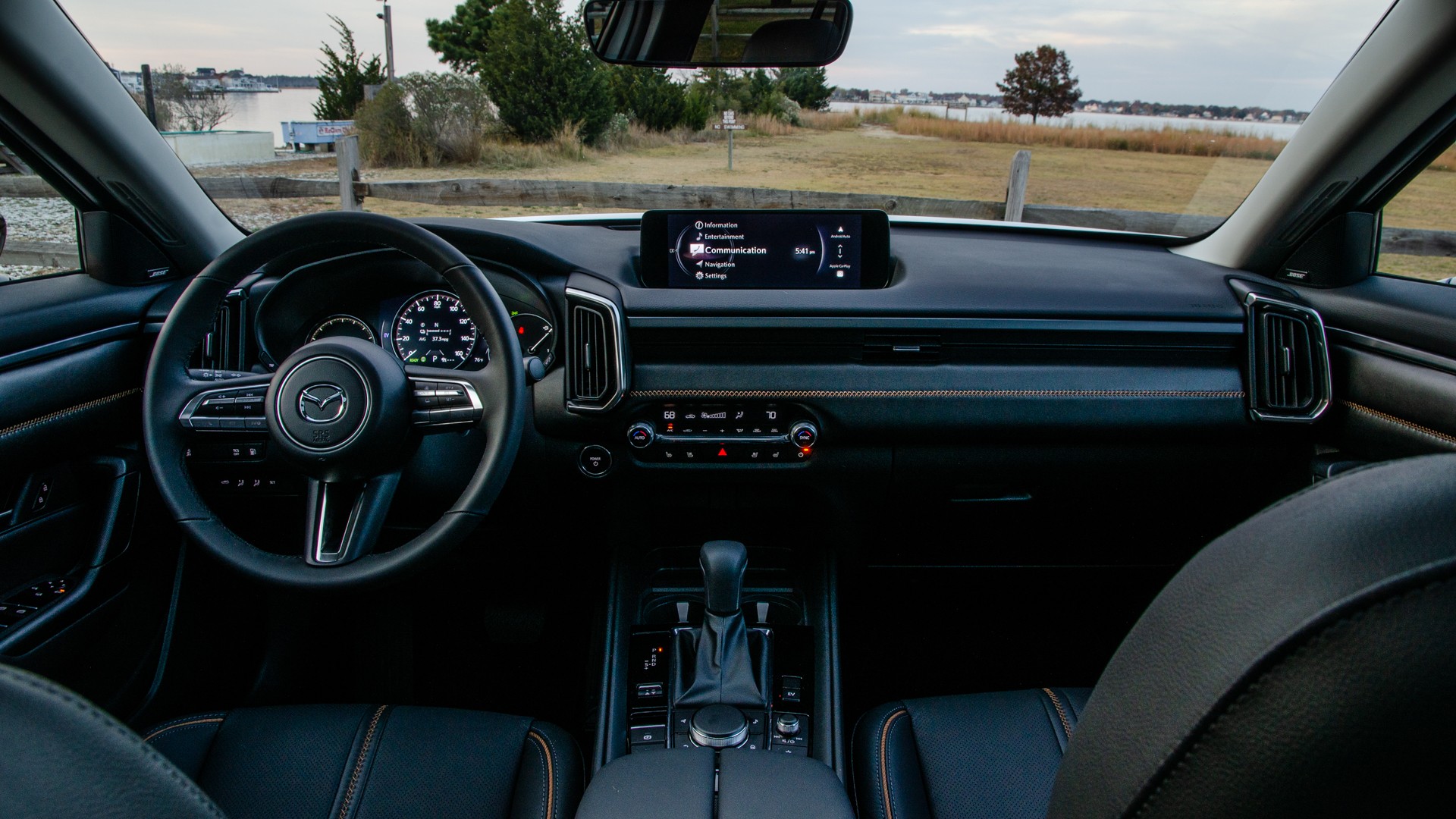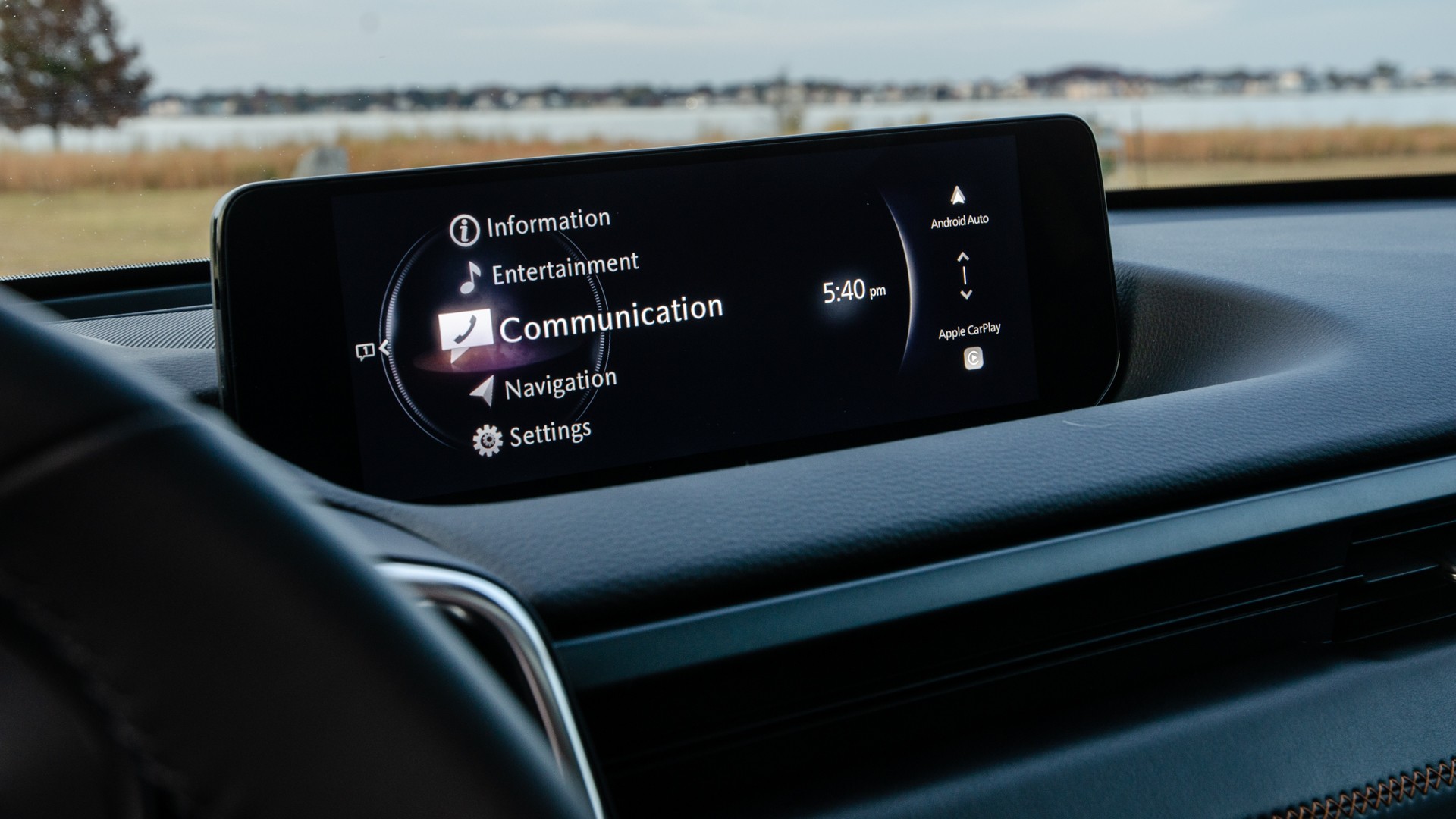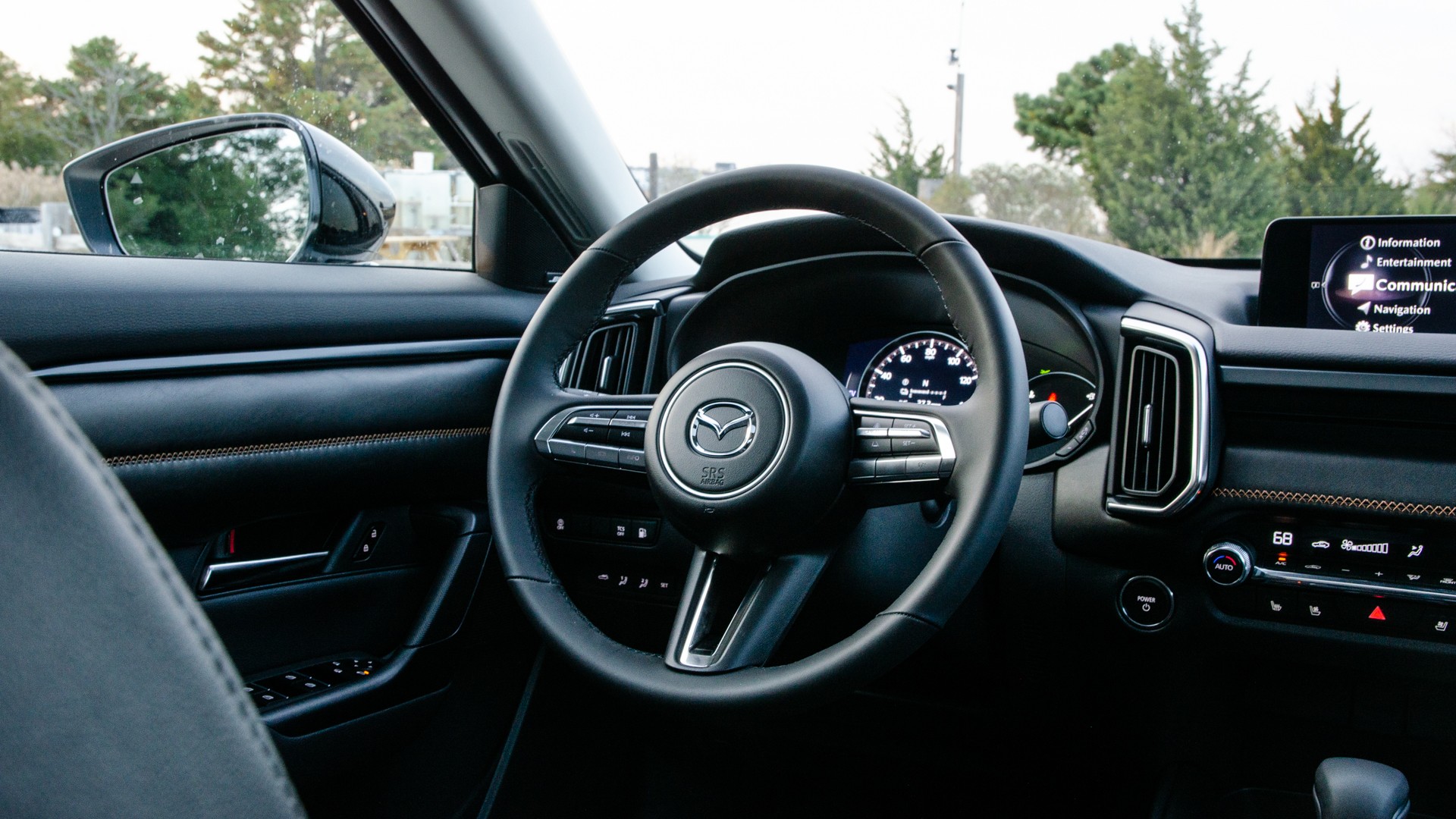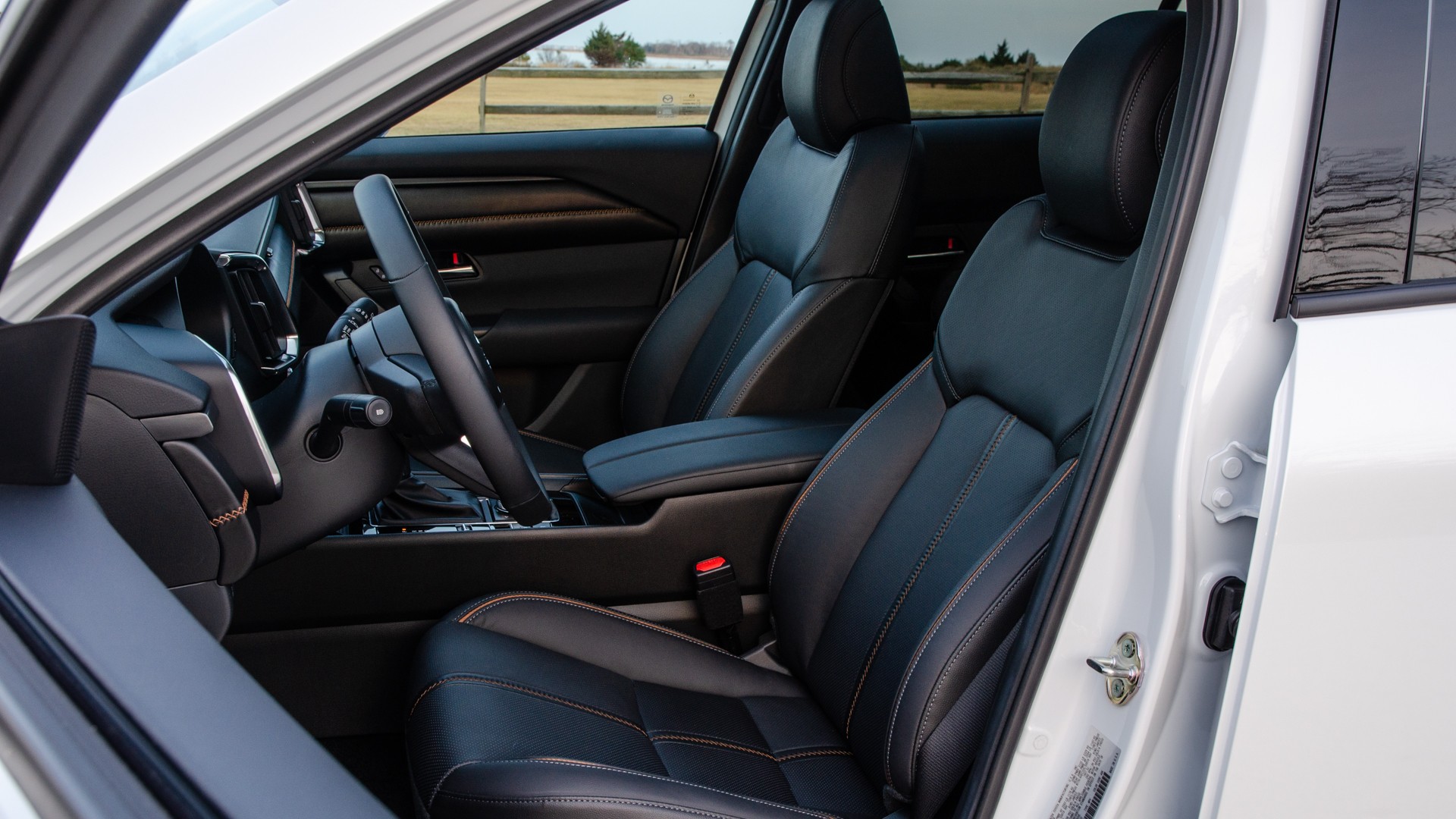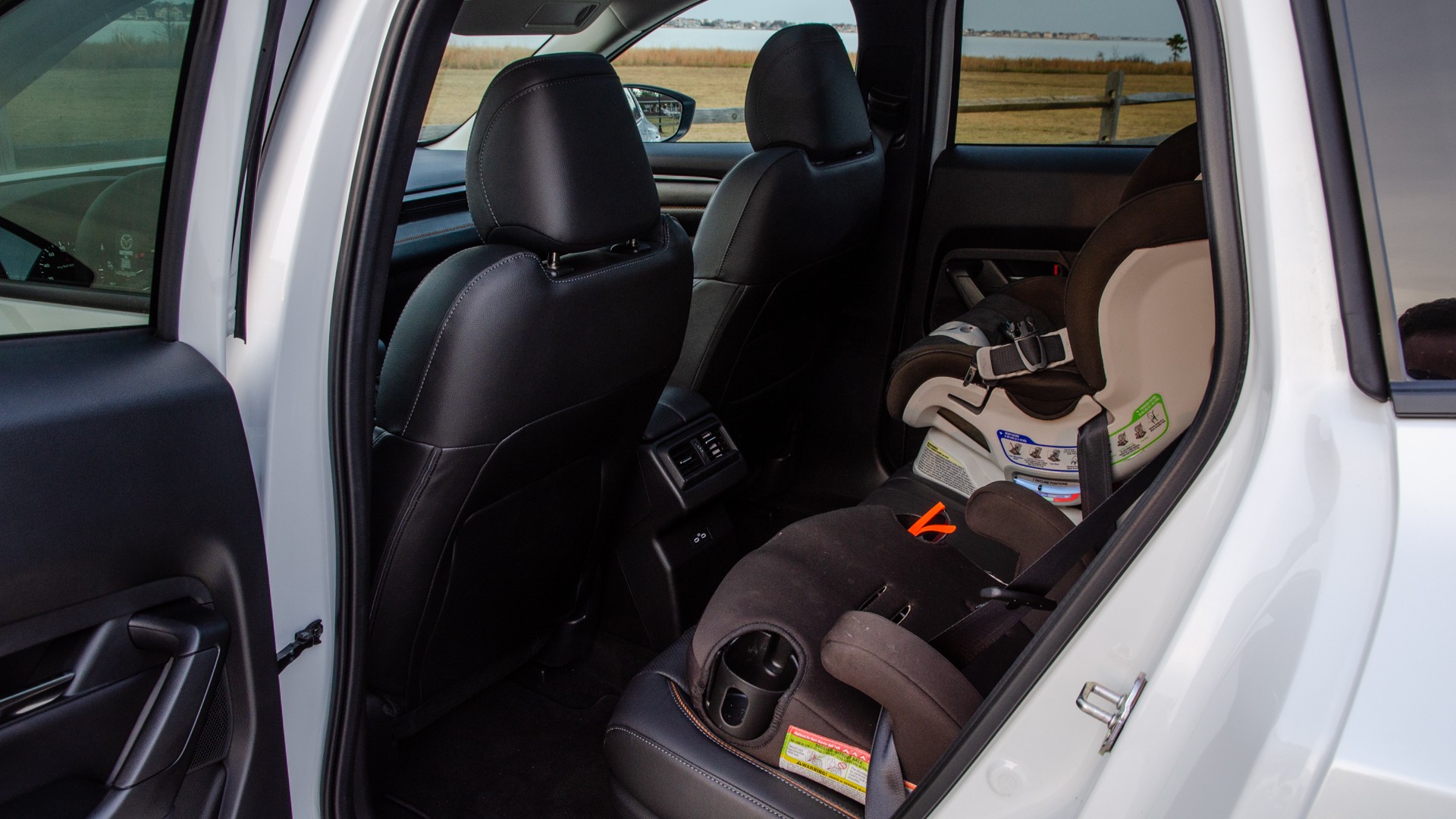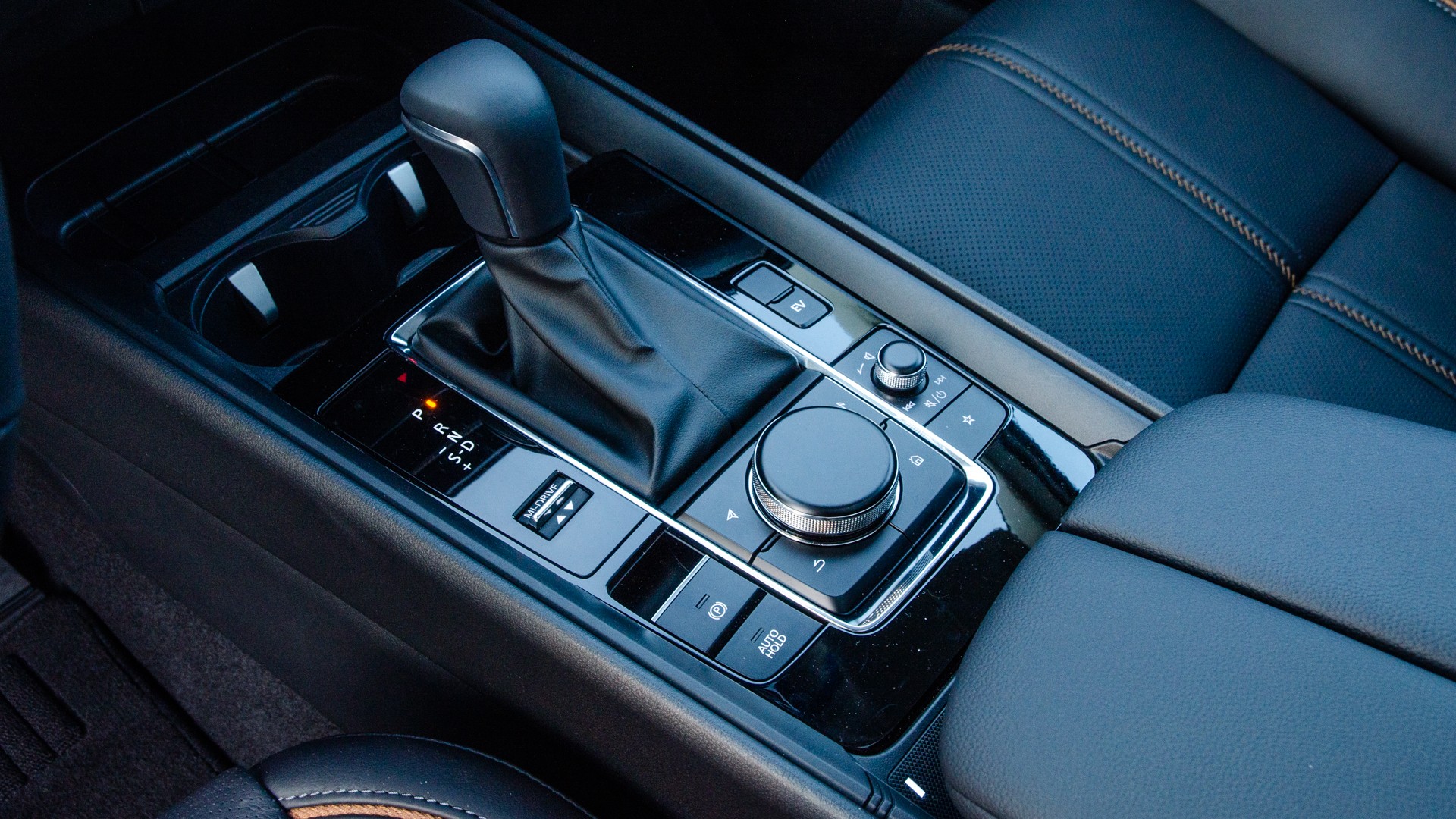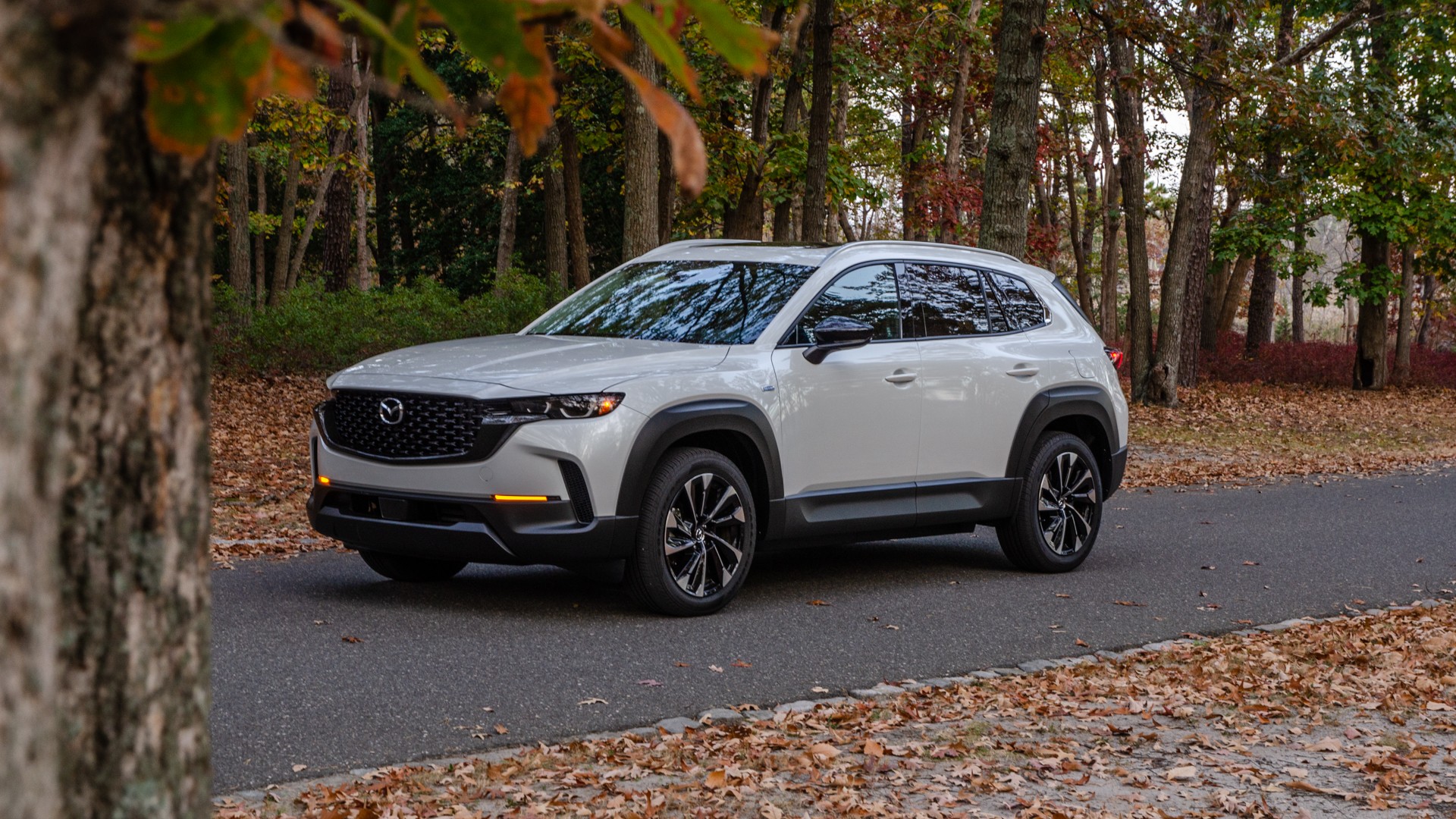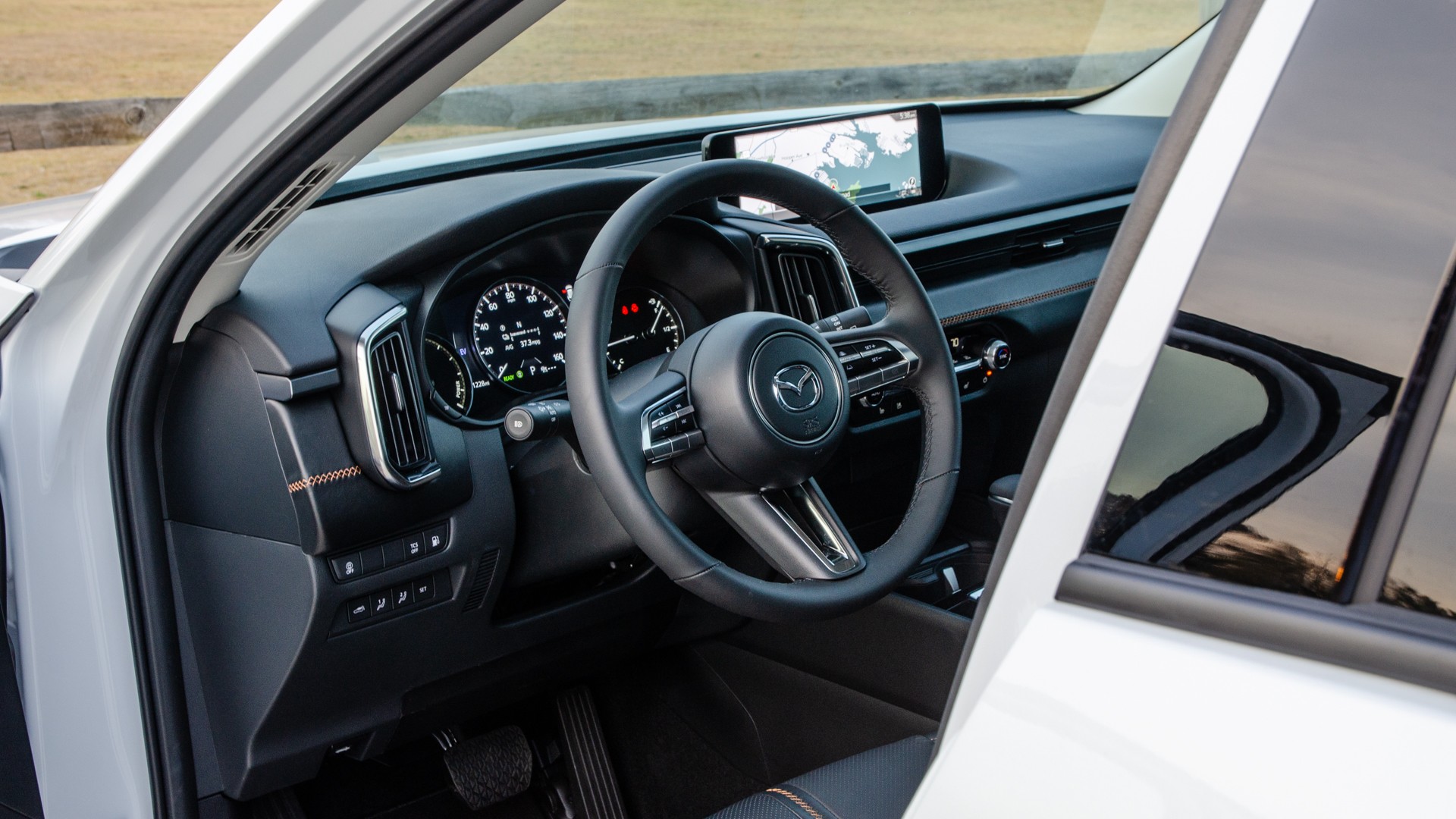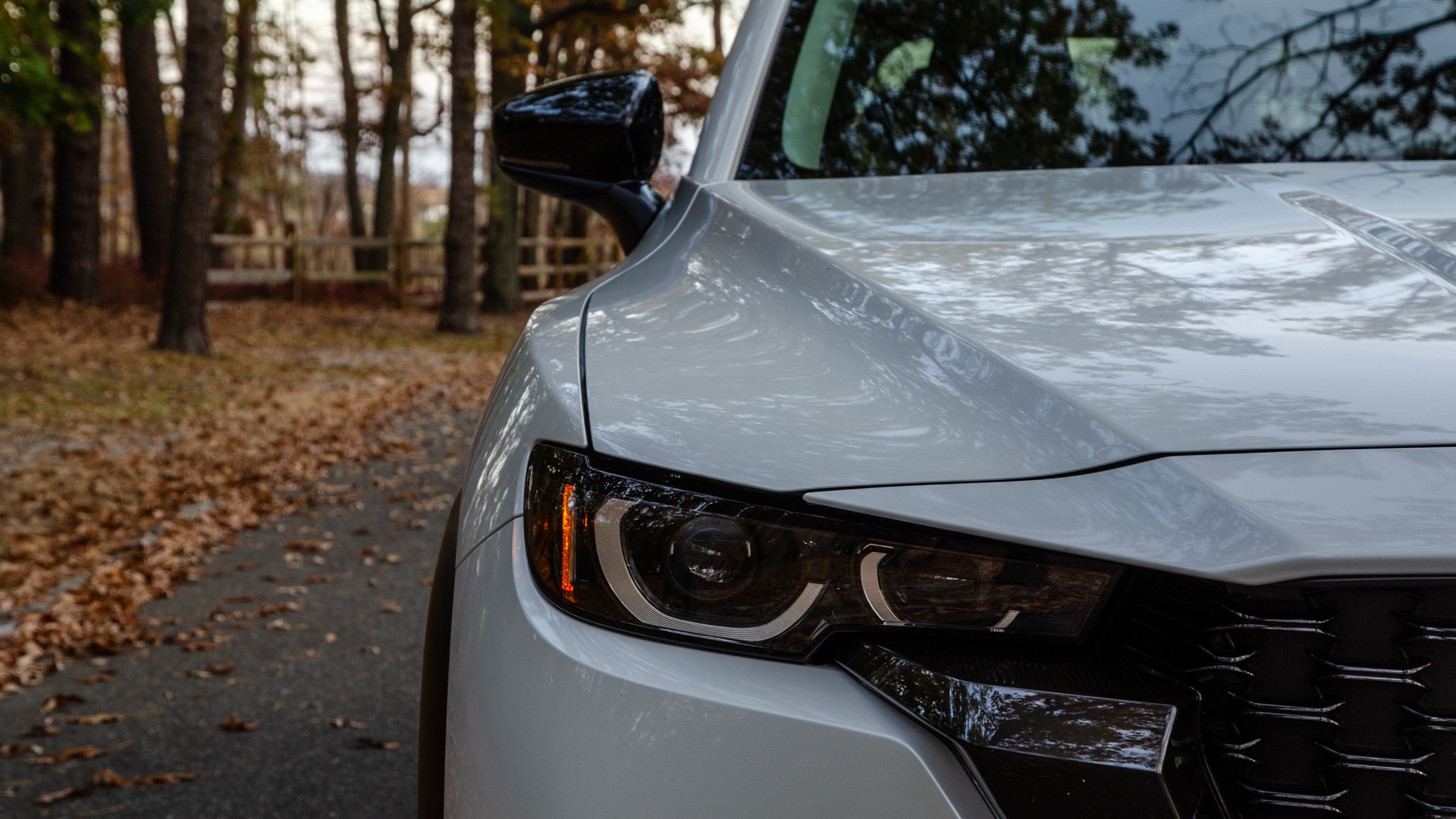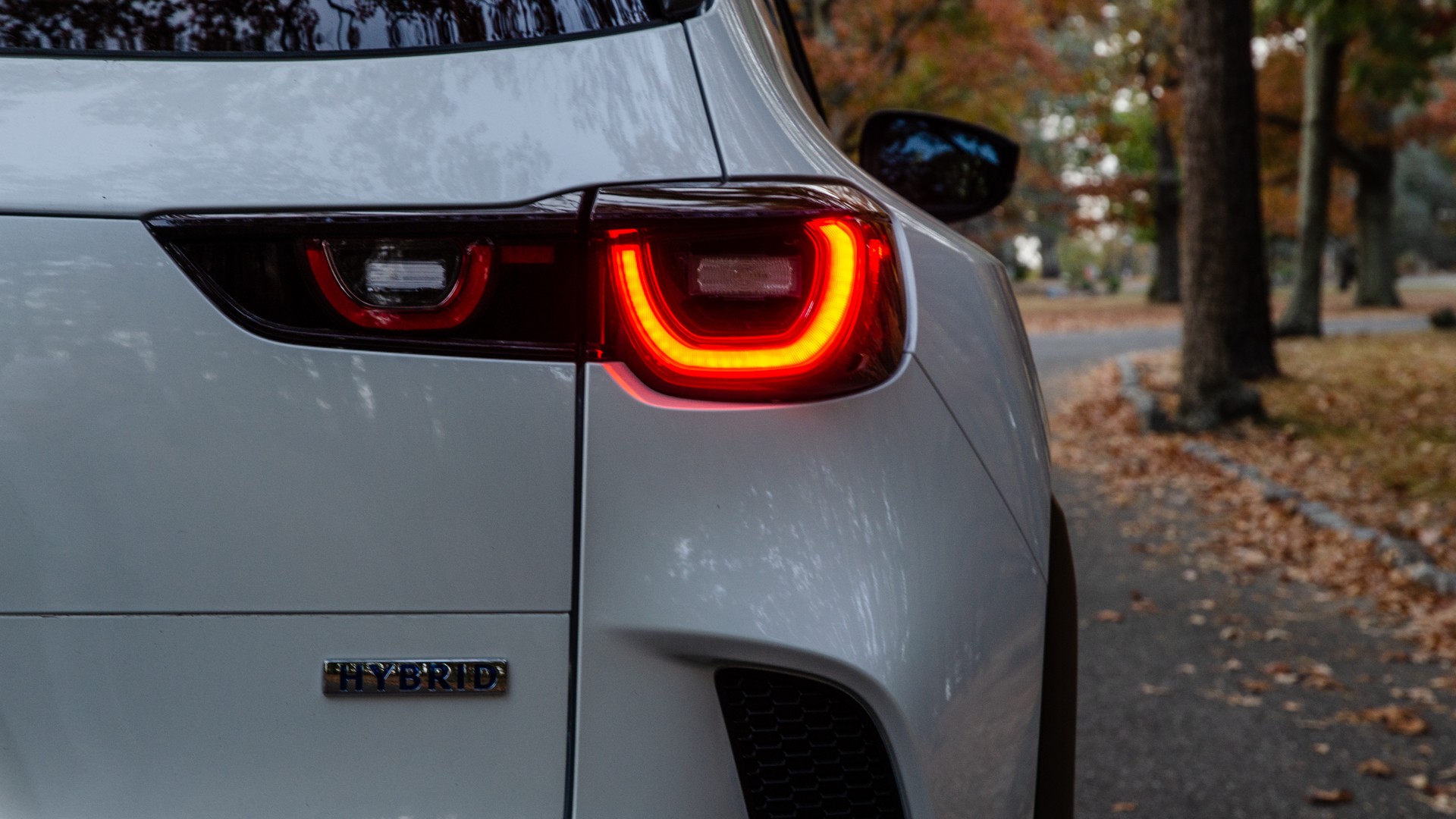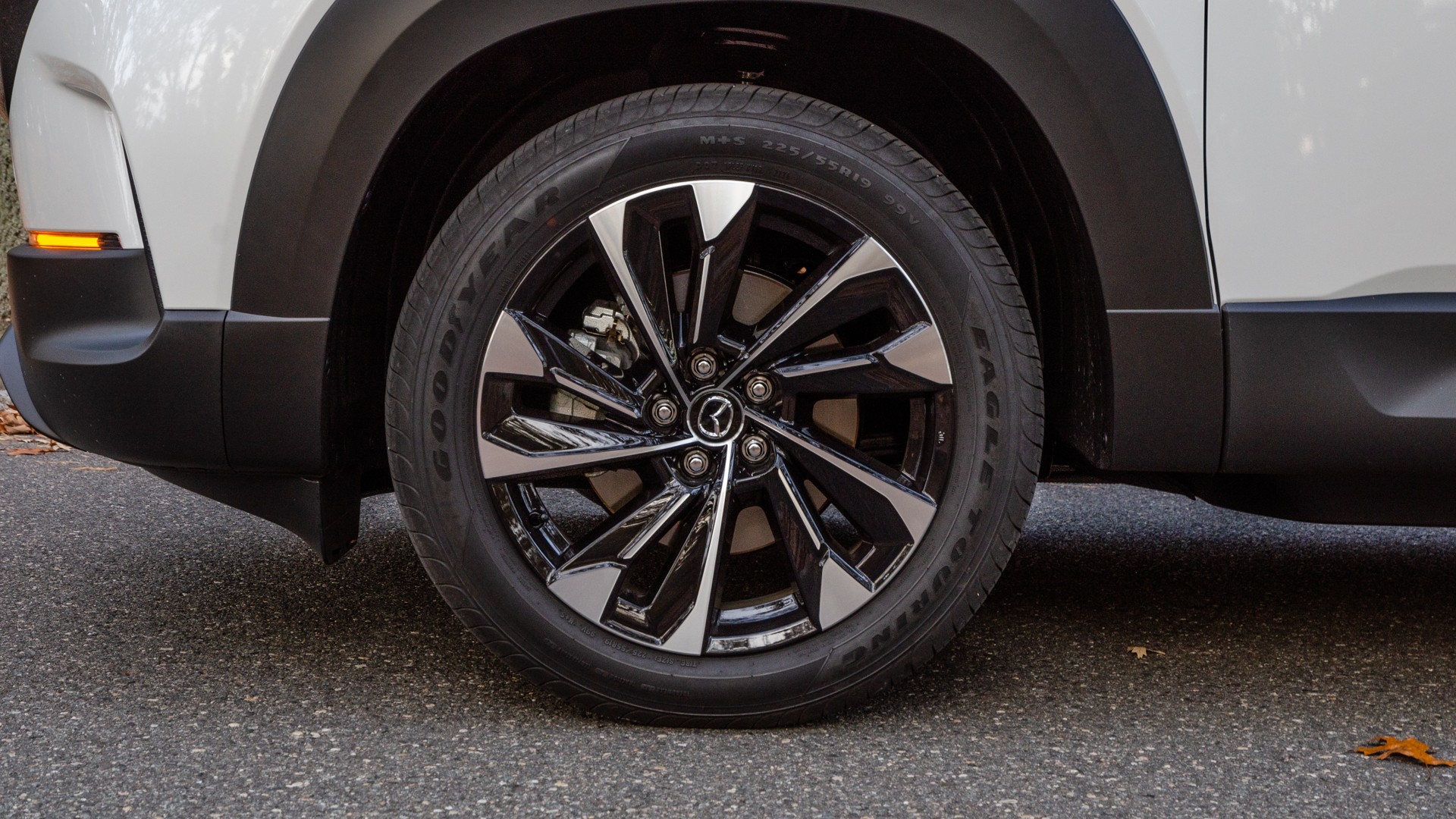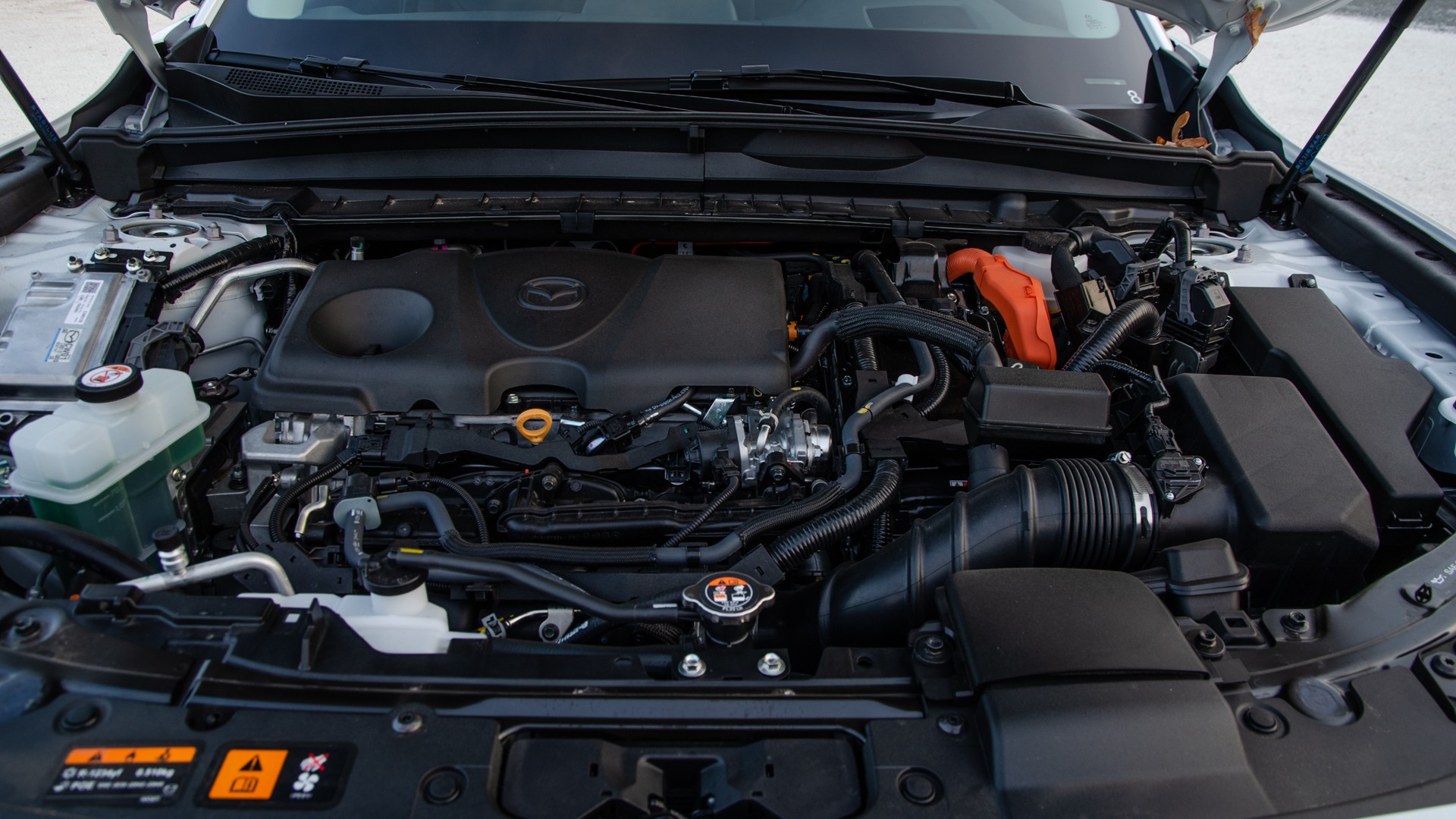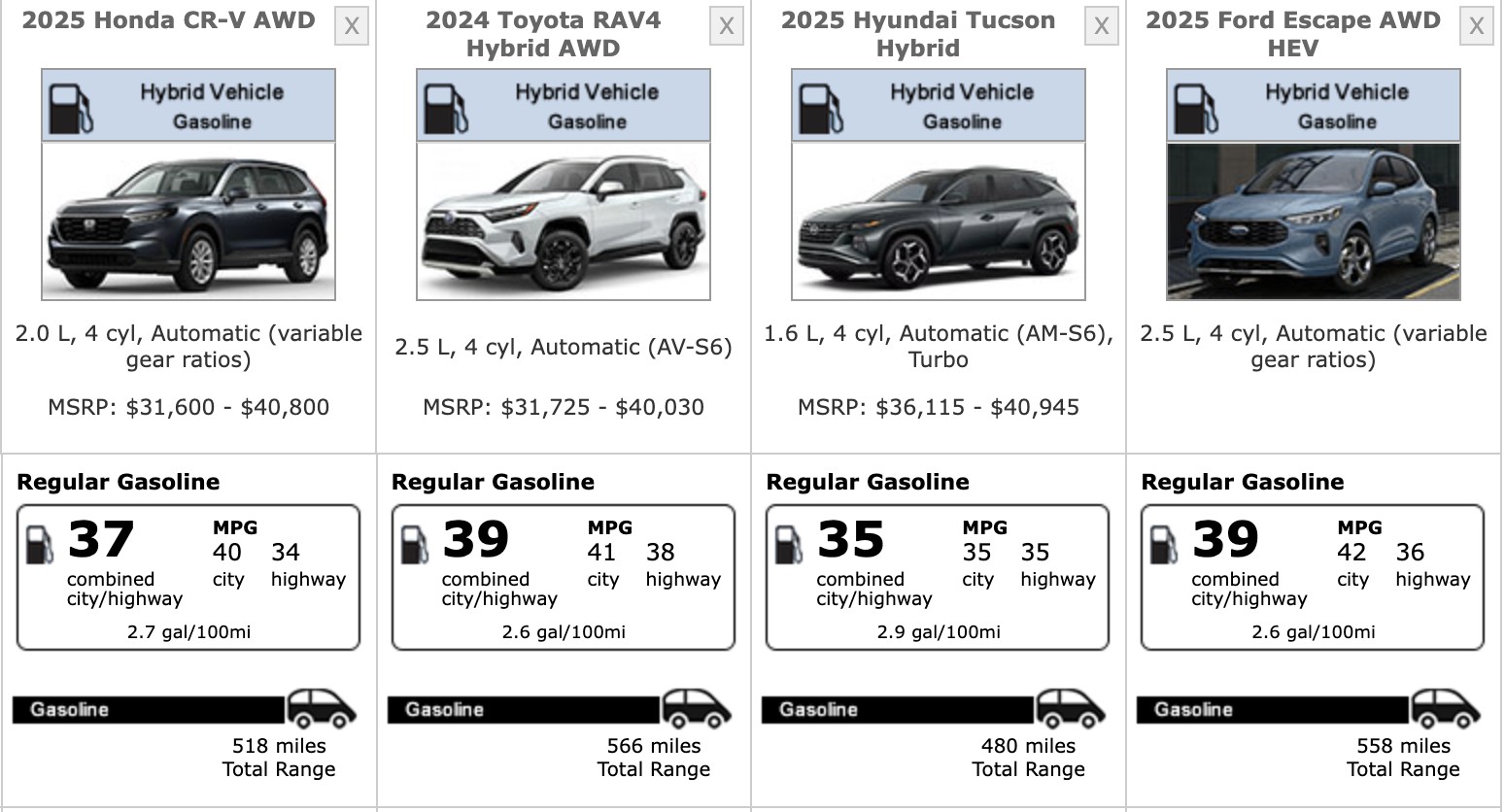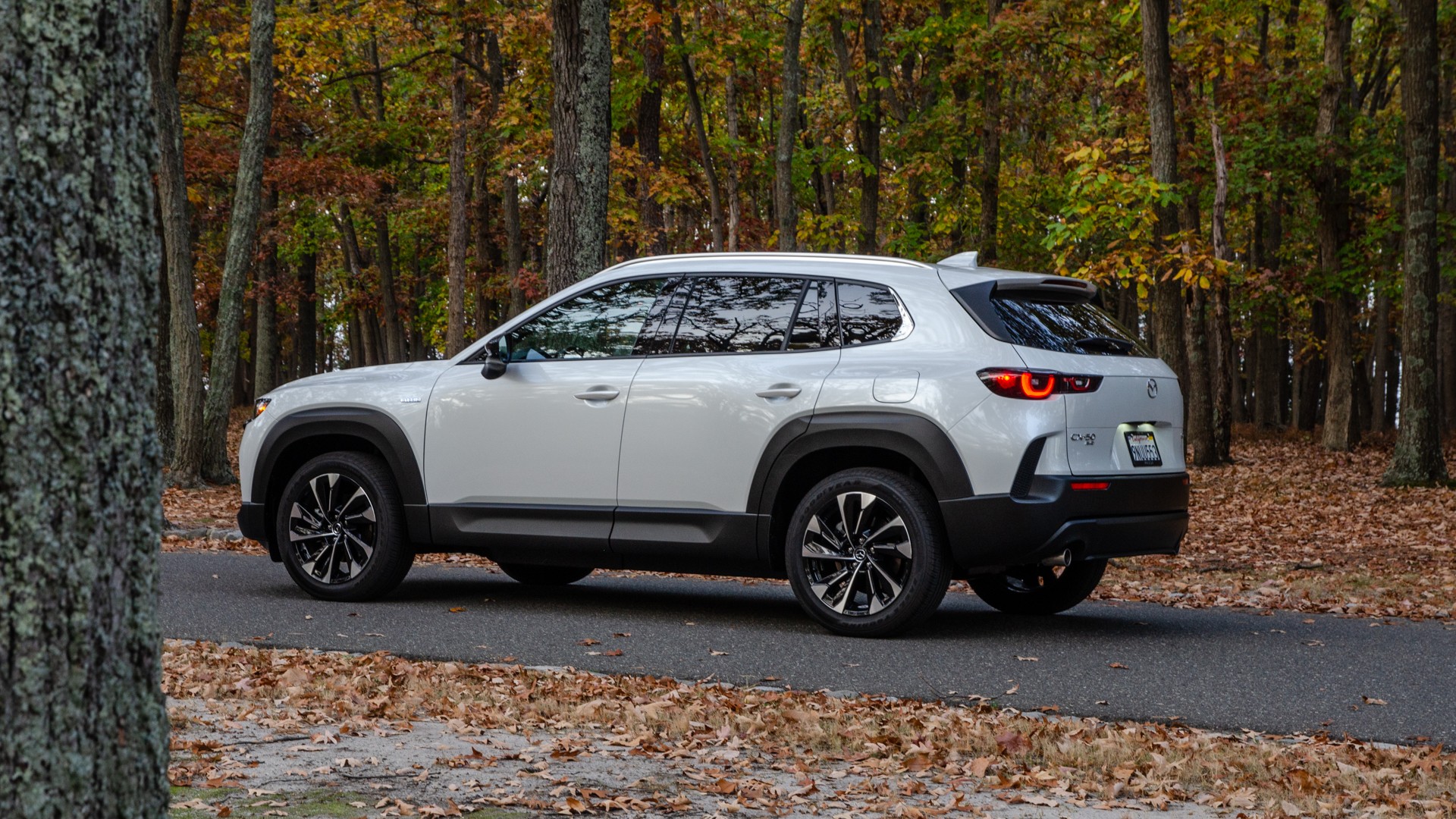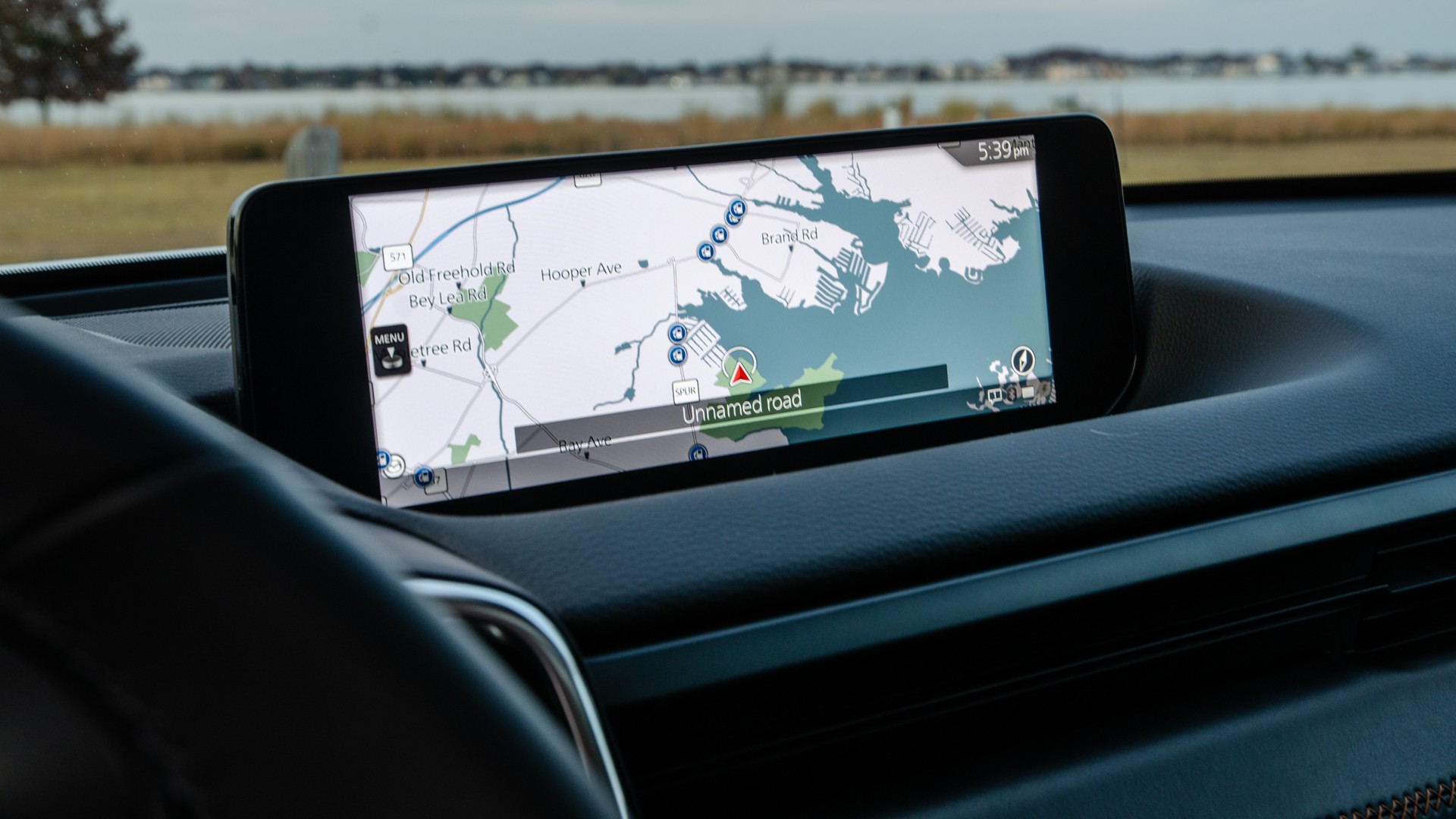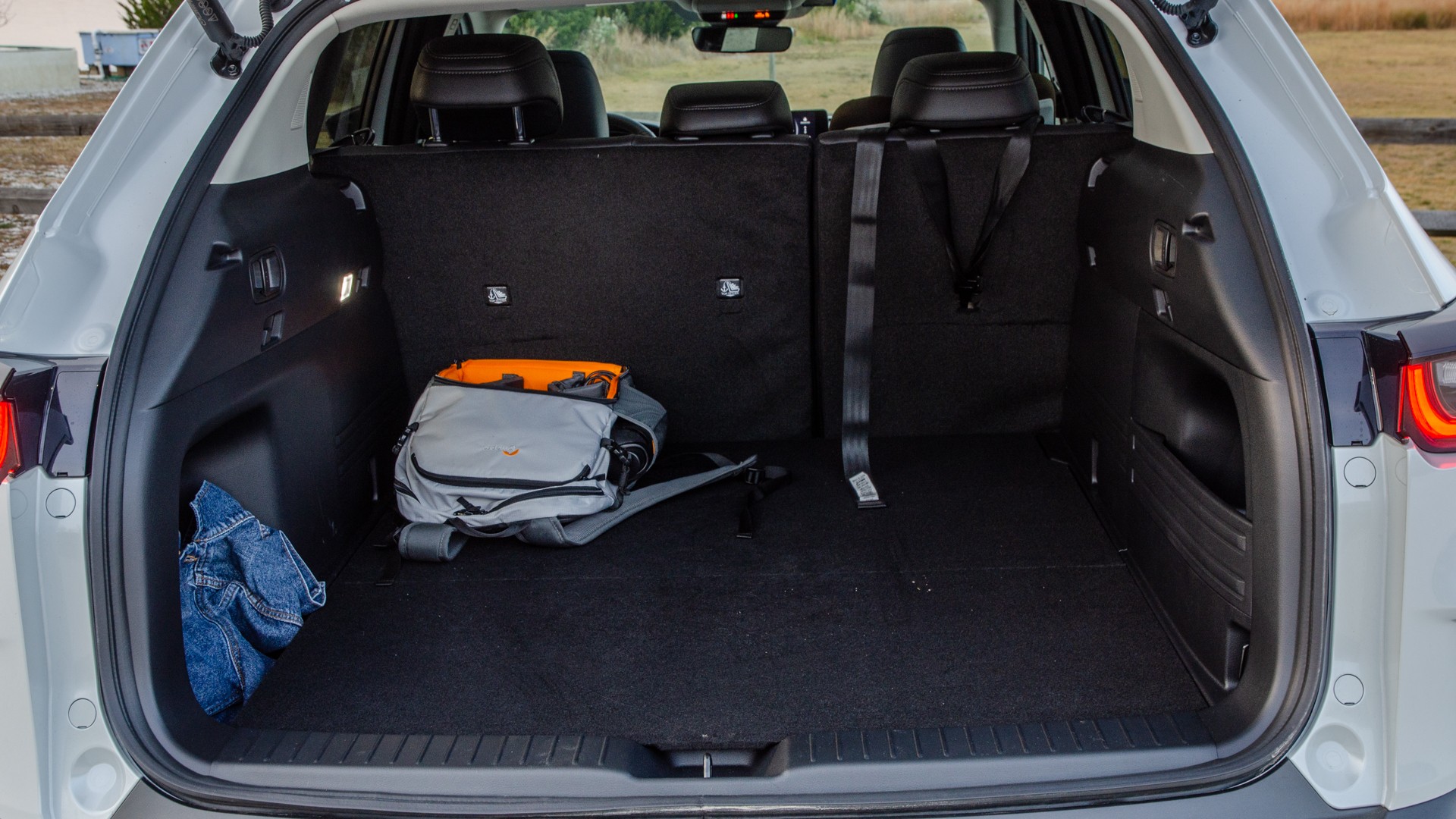The Mazda CX-50 has carved a niche for itself as a “driver’s crossover,” appealing to enthusiasts who crave a sporty driving experience in a compact SUV package. It’s a vehicle that understands the needs of those transitioning from sports cars to something more practical, yet it has struggled to capture the mainstream market share dominated by giants like the Honda CR-V and Toyota RAV4. The reasons? Its infotainment technology and fuel economy weren’t quite up to par with segment leaders – crucial factors for today’s crossover buyers.
When Mazda announced a CX-50 Hybrid, promising to retain the beloved driving dynamics while addressing the fuel economy concern with an electrified powertrain, anticipation was high. The prospect of a CX-50 with its engaging chassis, refined suspension, and precise steering, now enhanced with hybrid efficiency, seemed like a winning formula.
However, the 2025 Mazda CX-50 Hybrid, while promising on paper, faces a more complex reality on the road. While it retains many of the attributes that make the standard CX-50 appealing, the Toyota RAV4-sourced hybrid powertrain introduces a dissonance, diluting the CX-50’s inherent character and creating an identity crisis. It begs the question: who is this hybrid CX-50 truly for? It doesn’t emerge as a tech-forward hybrid leader, with a conventional hybrid system and infotainment that feels dated. Nor does it remain the sporty crossover, as the electrification noticeably dampens its spirited performance. The CX-50 Hybrid ends up in a no-man’s land, feeling more like a forced compliance exercise than a product of Mazda’s passionate engineering.
Mazda CX-50 Hybrid: The Basics
Instead of developing a proprietary hybrid system, Mazda opted for a pragmatic approach, leveraging its partnership with Toyota and adopting the proven hybrid technology from the Toyota RAV4 Hybrid. This collaboration is evident in the CX-50’s production location – the same Alabama plant where Toyota vehicles, including the Corolla Cross Hybrid, are manufactured. Beyond the powertrain, the CX-50 Hybrid maintains a strong resemblance to its gasoline-powered sibling. Visual distinctions are subtle, limited to “Hybrid” badging and a revised instrument cluster where a battery charge/power gauge replaces the traditional tachometer.
For those unfamiliar with the CX-50, its aesthetic appeal is undeniable. Since its introduction, it has consistently ranked among the most stylish crossovers in its class, boasting a low-slung, muscular stance that exudes sportiness. Signature design elements like the robust wheel arches, low ride height, sleek window lines, and black body cladding remain, ensuring the hybrid variant retains the CX-50’s visual charm. While new wheel designs are introduced, they maintain a visual kinship with the existing CX-50 wheel options.
The interior story mirrors the exterior. Mazda has largely preserved the driver-centric cabin environment in the Hybrid, resulting in a space that’s both familiar and functionally focused. This translates to a well-constructed, ergonomically sound interior that will resonate with drivers who appreciate a cockpit-like feel. However, this carryover also brings along the infotainment system, which now feels noticeably behind the curve. In a segment where technology is a key selling point, the CX-50 Hybrid’s infotainment can feel like a compromise, especially when considering its price point aligns with competitors offering more advanced systems.
The instrument cluster revision, while incorporating hybrid-specific gauges, keeps the information display relatively basic. It indicates battery usage and charging status but lacks the detailed power flow diagrams found in rivals like the RAV4 and CR-V Hybrids. Enthusiasts who enjoy delving into the technical intricacies of hybrid powertrains might find the CX-50 Hybrid’s display somewhat simplistic.
Behind the Wheel: Driving the Mazda CX-50 Hybrid
The Toyota-sourced hybrid powertrain takes center stage in the CX-50 Hybrid, for better and for worse. It combines a 2.5-liter Atkinson cycle, naturally aspirated four-cylinder engine with three electric motors – two supporting the engine and one driving the rear axle, creating an e-AWD system. The combined output is 219 horsepower and 163 lb-ft of torque, making it the least powerful CX-50 variant available. This power deficit is palpable. The CX-50 Hybrid feels underpowered across the rev range, and the continuously variable automatic transmission (CVT) further exacerbates the sensation with its characteristic drone under acceleration.
While no one expects a sports car-like acceleration from a hybrid crossover, the CX-50 Hybrid’s powertrain feels uninspired, coarse, and ultimately detracts from the overall driving experience. The silver lining lies in fuel efficiency. During testing, the CX-50 Hybrid averaged around 37 mpg, closely aligning with Mazda’s claimed 38 mpg combined figure.
The standard CX-50 is renowned for its agility and engaging handling within the crossover segment, attributes that are largely retained in the hybrid version. It navigates corners with a surprising nimbleness, feeling more akin to a sporty car than a typical SUV. The steering remains communicative and well-weighted, and the chassis exhibits impressive balance. However, when you attempt to exploit this dynamic potential and demand spirited acceleration, the powertrain simply doesn’t deliver. The CX-50 Hybrid possesses the chassis finesse but lacks the engine performance to fully capitalize on it.
Despite the powertrain shortcomings, Mazda’s suspension tuning expertise shines through. The CX-50 Hybrid maintains the composed and comfortable ride quality of its gasoline counterparts. Braking performance is also commendable, with a responsive pedal feel and confident stopping power. Visibility remains good, making it easy to maneuver the CX-50 Hybrid despite its size. If you appreciate the driving dynamics of the standard CX-50, the Hybrid will feel familiar – until you need to accelerate with urgency.
High Points and Low Points of the CX-50 Hybrid
For driving enthusiasts, the standard Mazda CX-50 stands out in the crossover landscape for its exceptional steering feel, suspension tuning, and overall handling balance. It embodies the spirit of Mazda’s driver-focused philosophy, evident in models like the MX-5 Miata. The main gauges are another positive aspect, offering clear and straightforward readability, even if they lack the visual sophistication of more modern digital clusters. The seats are well-contoured, striking a good balance between lateral support for spirited driving and long-distance comfort. However, these positives are equally applicable to the non-hybrid CX-50.
Moving to the downsides specific to the hybrid, the infotainment system is a significant point of criticism. It feels outdated in today’s market. While the inclusion of standard wireless Apple CarPlay is welcome, its functionality is hampered by Mazda’s rotary control dial. While rotary controllers were once favored in luxury brands like BMW and Audi, those infotainment systems were designed around this input method. Apple CarPlay, designed primarily for touchscreens, feels cumbersome to navigate with the rotary dial in the CX-50.
Features, Options, and Competition in the Hybrid Crossover Segment
One notable advantage of the CX-50 Hybrid is standard all-wheel drive. Interestingly, the standard paint options deviate from the usual white and black, instead offering blue and black as no-cost choices, a slightly unconventional decision.
The test vehicle was a fully-equipped Premium Plus trim, carrying a significant price premium over the base model. This trim level includes features like a panoramic sunroof, 19-inch wheels, a Bose 12-speaker sound system, heated leather seats, and a heated steering wheel. While the as-tested price of $41,920 might seem steep given the CX-50 Hybrid’s performance limitations, the Premium Plus trim leaves little to be desired in terms of equipment.
The Toyota RAV4 Hybrid is the most direct competitor, sharing the same powertrain and a similar price range. The RAV4 Prime plug-in hybrid, while slightly more expensive, offers a significantly more powerful and refined plug-in hybrid system. The Honda CR-V Hybrid is another strong contender, boasting a more responsive powertrain and more contemporary technology, although it may not match the CX-50’s handling prowess. The Hyundai Tucson Hybrid also competes in this segment.
Fuel Efficiency: Does the CX-50 Hybrid Deliver?
Fuel economy is a primary motivator for choosing a hybrid, and the CX-50 Hybrid aims to deliver on this front. While not designed for outright speed or aggressive driving, the hybrid powertrain prioritizes efficiency. The observed 37 mpg in testing aligns closely with Mazda’s estimates of 39 mpg city, 37 mpg highway, and 38 mpg combined.
These figures position the CX-50 Hybrid competitively within the hybrid crossover segment, alongside hybrid versions of the Honda CR-V, Toyota RAV4, Hyundai Tucson, and Ford Escape.
Value and Final Verdict on the Mazda CX-50 Hybrid
The 2025 Mazda CX-50 Hybrid’s value proposition is questionable, even with a relatively modest price increase over the standard gasoline model. While it offers improved fuel efficiency, other hybrid crossovers in the same price bracket provide better overall efficiency and more advanced technology. If fuel economy is the primary concern, more compelling hybrid options exist, including one that shares the CX-50 Hybrid’s powertrain.
For buyers seeking a blend of CX-50’s engaging driving dynamics and hybrid efficiency, the CX-50 Hybrid attempts to bridge that gap. However, the hybrid system compromises too much of the CX-50’s inherent character, resulting in a vehicle that feels less like a deliberate Mazda product and more like a market-driven necessity.
| 2025 Mazda CX-50 Hybrid Specs |
|---|
| Base Price (Premium Plus as tested) |
| Powertrain |
| Horsepower |
| Torque |
| Seating Capacity |
| Cargo Volume |
| Curb Weight |
| Max Towing |
| Fuel Economy |
| Quick Take |
| Score |
